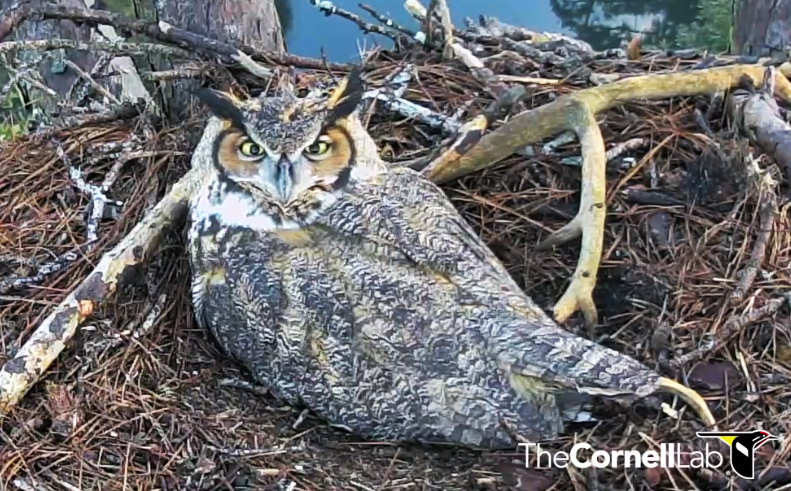Will The Next Egg Hatch? Livestream Drama In Great Horned Owl Nest
A terrific bird cam to check out from Cornell Lab of Ornithology: A great horned owl mom with a baby and a potential baby (otherwise known as an egg) on the nest in Georgia.
By Vicki Croke
Mom on the nest in Savannah, Georgia. Video still courtesy of The Cornell Lab of Ornithology and Skidaway Audubon.
Bird cams start getting busy this time of year, and we’ve got a terrific one to check out from The Cornell Lab of Ornithology. A great horned owl mom with a baby (hatched Tuesday) and a potential baby (otherwise known as an egg) on the nest at a golf course on an island near Savannah, Georgia. (Last year the nest was occupied by bald eagles!)
Watch the livestream of the Great Horned Owl nest here:
[youtube=http://youtu.be/Q4iKJIiYRek]
You can watch live as the chicks grow up and never worry about missing the good stuff. Cornell also has a playlist of the highlights.
According to the site: Right before darkness on February 3, the female Great Horned Owl arises from the nest bowl and exposes the just-hatched nestling for the first time. The owlet, still wobbly and weak from its prior life inside the shell, totters around the bottom of the nest bowl till the female returns and continues brooding it.”
[youtube=http://youtu.be/2nRPOJkHY8c]
Temperature and weather information and a list of FAQs are part of the nicely done package. Don’t forget to check out the video comments and the @SavannahOwls Twitter feed, which are often both illuminating and funny.
Nice crowd, those bird people. In fact, they make sure we don’t worry unduly about the chicks by posting information like this:
“No one is sitting on the eggs or young. Won’t they get cold?”
It is normal for parents to leave the eggs and nestlings exposed now and then. In most cases, they don’t stay away long enough for the eggs or young to suffer harm. Great Horned Owls have evolved over millions of years to cope with variable conditions, including harsh weather. The owls are able to incubate eggs successfully when outside temperatures are below -27.4 degrees Fahrenheit (-33 degrees Centigrade). Eggs have been recorded to withstand female absence of 20 minutes at -13 degrees Fahrenheit (-25 degrees Centigrade) when the female joined her mate in hooting at a neighboring male.
22:22, 02/03: Do we have another pip? We’ll have to watch & see! #savannahowls pic.twitter.com/wM1qTc56aC
— SavannahOwls (@SavannahOwls) February 4, 2015

